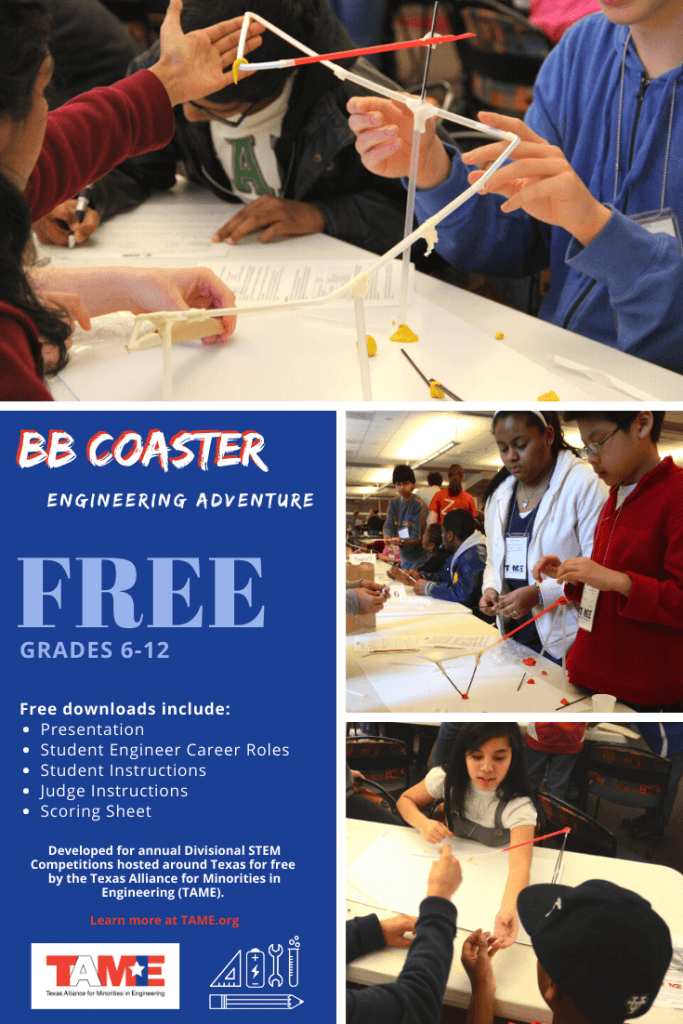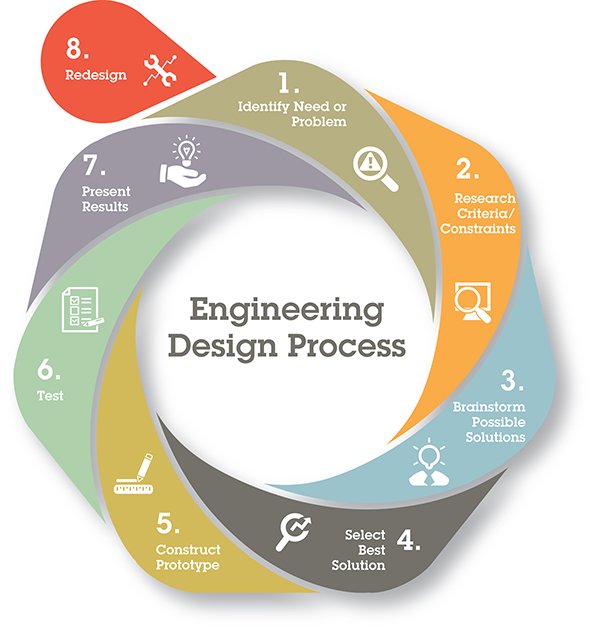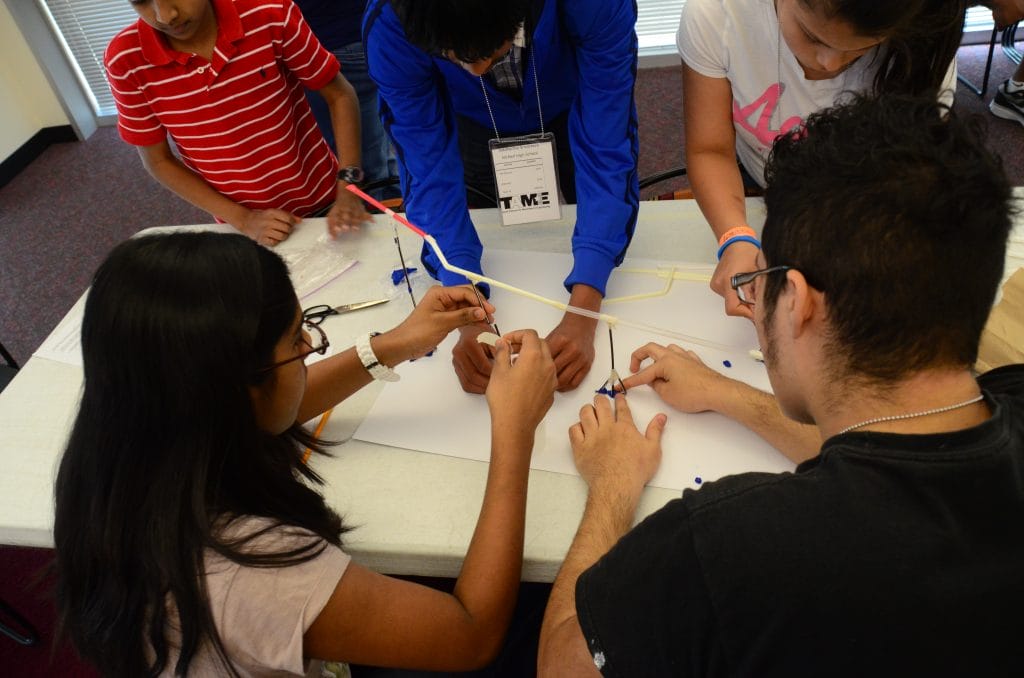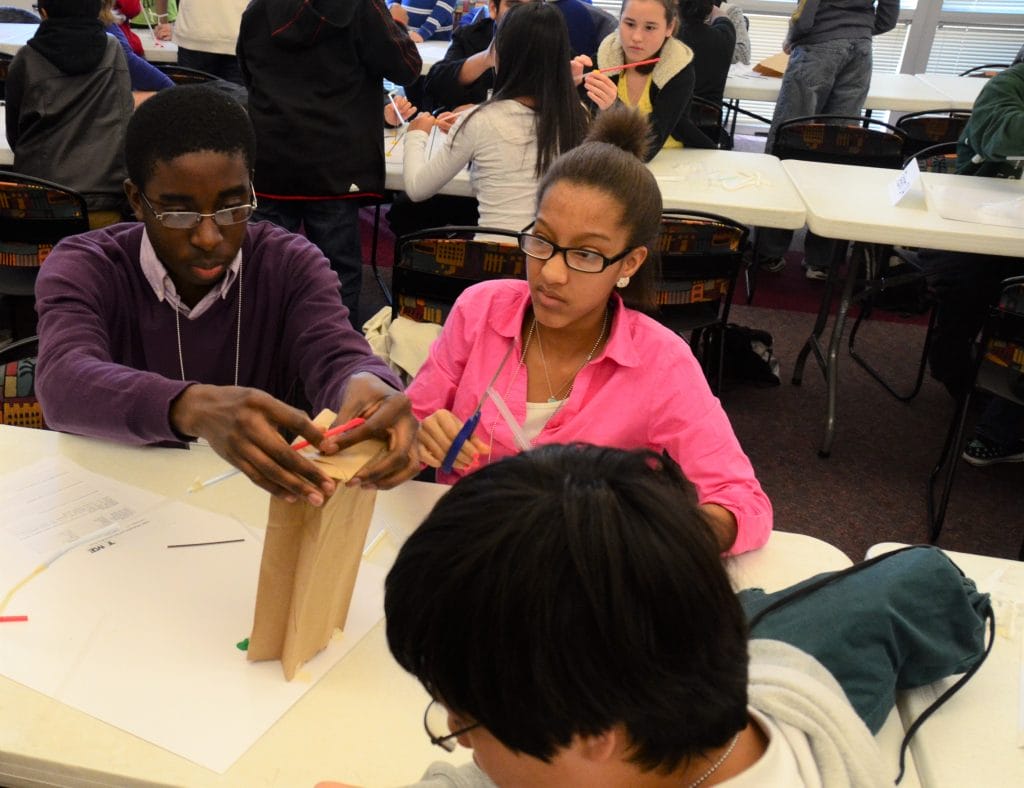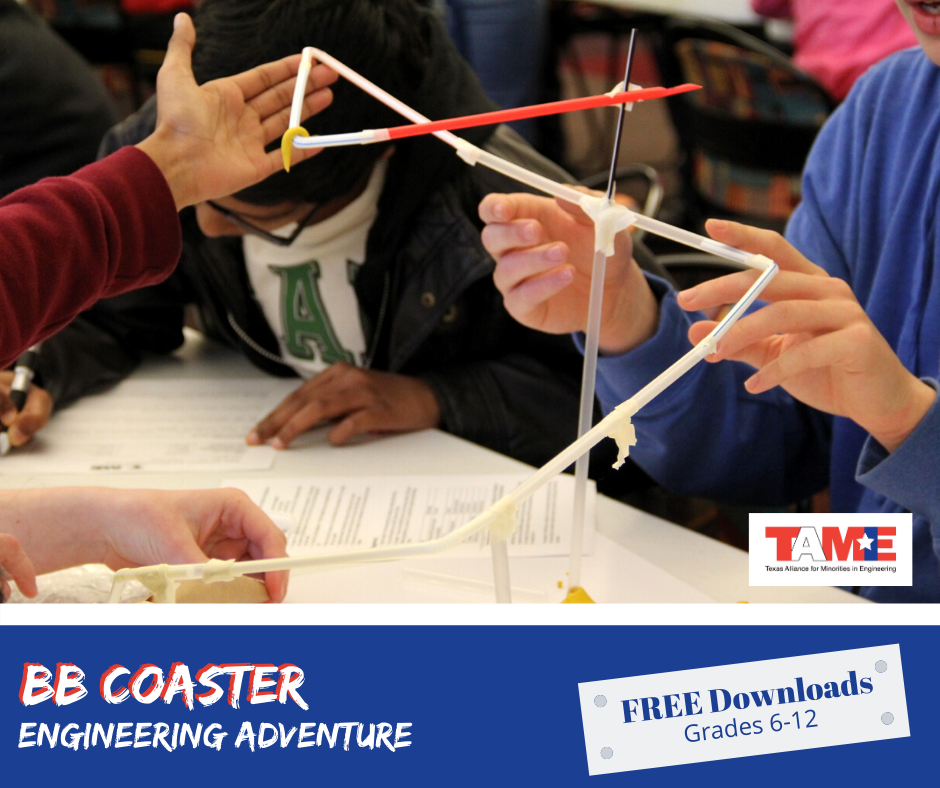
Welcome to TAME Engineering Adventures! Our goal is to help you challenge your students with hands-on learning.
Get ready to roll with TAME’s BB Coaster 2012 Divisional Engineering Design Challenge to provide a rollercoaster of a challenge for your students. This challenge reaches new heights of difficulty for students of all ages while proving to be a fun ride!
It’s a great way to get your TAME Club members to start thinking like engineers in preparation for our STEM Competitions.
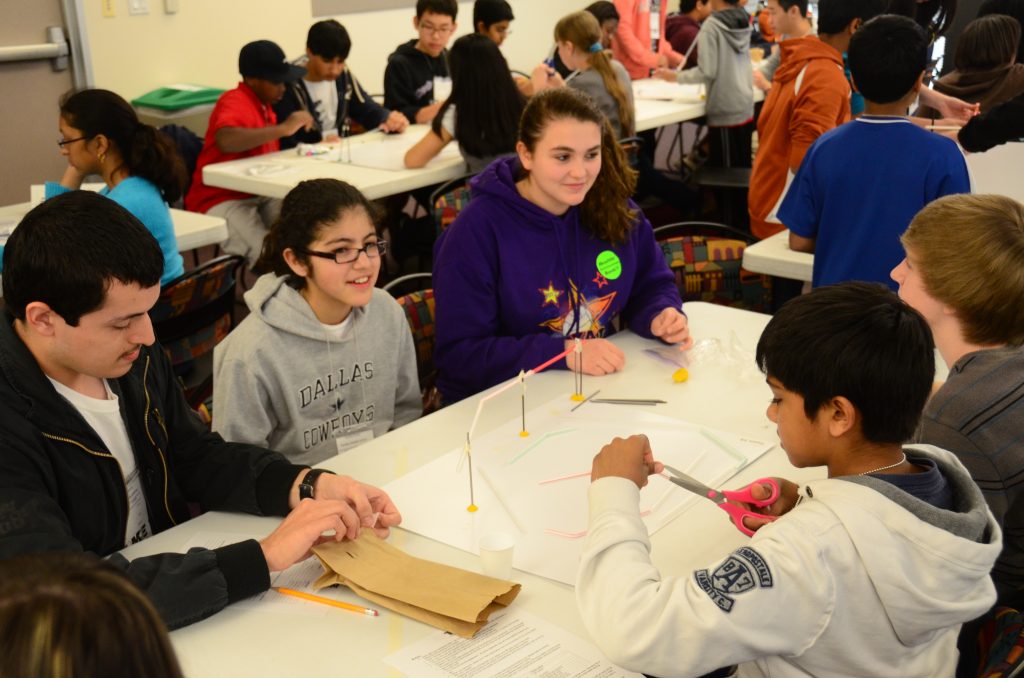
Photo of a student team building their BB Coaster prototype from the 2012 Capital Area Divisional Math & Science Competition, hosted at National Instruments.
Introduction: How to think like an engineer
The emphasis of each Design Challenge is not on winning, but on the collaborative design process. Every challenge is an opportunity for students to practice both individual and collaborative problem-solving and to reflect on how they might improve for the next time.
Photo of a student team building their BB Coaster prototype from the 2012 Capital Area Divisional Math & Science Competition, hosted at National Instruments.
Competition Adventure: BB Coaster Challenge! 2012 Divisional Engineering Design Challenge
The BB Coaster challenge was no easy feat to beat for the 2012 Divisional Engineering Design Challenge, hosted at National Instruments.
Design Brief:
A new theme park is opening in your area. Your engineering team is in charge of developing an innovative coaster that reaches new heights, lengths, and shapes. Consider every variable and option when brain storming your design.
You have 45 minutes to assign team roles, design, build and test a BB-coaster. When time is called, you must put all materials down and step away from the table.
Check out these resources that will guide you through the engineering design challenge, but feel free to make accommodations that best fit your classroom.
Primary objectives: Focus on innovation, your track should be long, high, and contain several twist and turns to gain the most points; make sure your bb can complete the track.
Suggested time:45 minutes
Scoring Summary: The following criteria can be used to score the BB Coaster. Only parts of the track that the bb travels through are scored.
Total Score = Completion of the track + BB remains in paper cup + Time to complete track + Height of track + Length of track + Turn(s) greater than or equal to 90˚ + Vertical loop(s)
See below for scoring sheet and additional information.
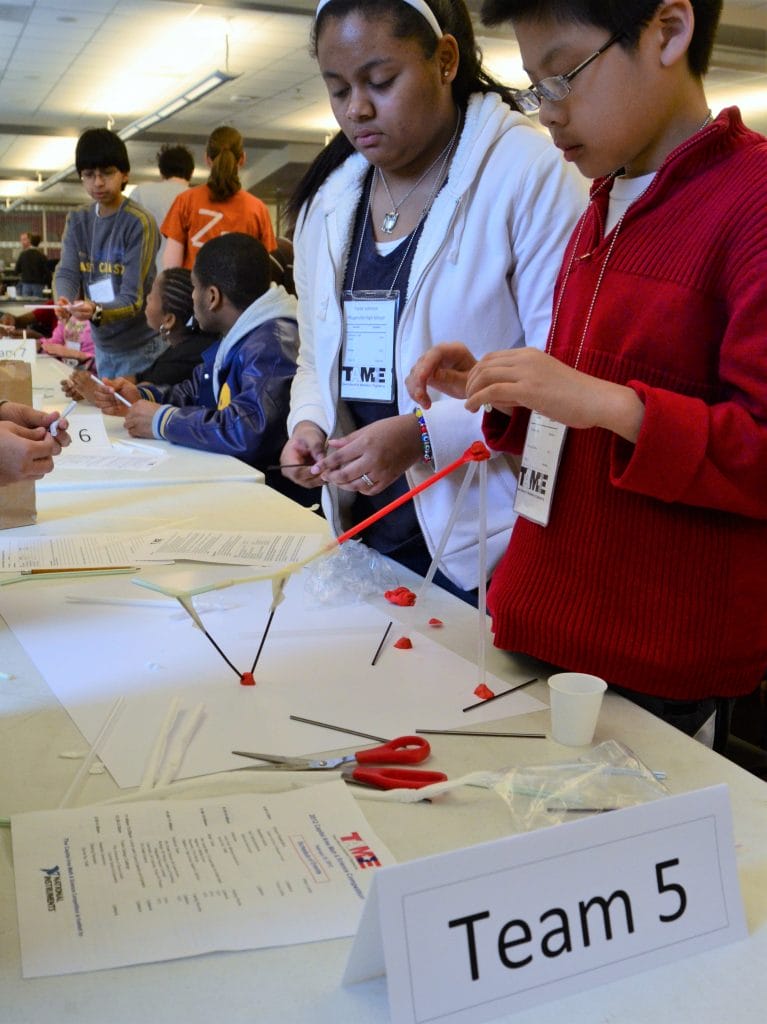
Suggested materials
Club Sponsors, feel free to simplify by using materials on hand. In many cases the competitors did not use all the materials, so it is likely you can run this competition with what you have in your classroom.
Materials per team:
RAW MATERIALS, MAY BE ALTERED:
1 spoon straw
10 drinking straws
10 stirrer straws
1 poster board
1 pair of scissors
Masking tape
1 paper cup
3 metal BBs
1 lump of clay
1 paper lunch bag
OTHER RESOURCES, MAY NOT BE ALTERED OR USED IN PROTOTYPE:
| 1 pair of scissors |
| 2 sharpened pencils |
| Design challenge instructions |
| Small baggie (used for collection) |
| 10 BBs** |
| 1 plastic cup (to measure and pour BBs) |
**In the 2019 engineering challenge that also used BBs, Black Diamond BBs proved to be the best because they are coated to reduce friction. Uncoated BBs are functional but tended to get stuck in the straws more often. TAME tested several brands and settled on Hornady brand Black Diamond Anodized .177 Steel BBs.
JUDGING MATERIALS, MAY NOT BE ALTERED OR USED IN PROTOTYPE:
Plastic tablecloth
Magnetic sweeper (TAME used this brand from Lowe’s.)
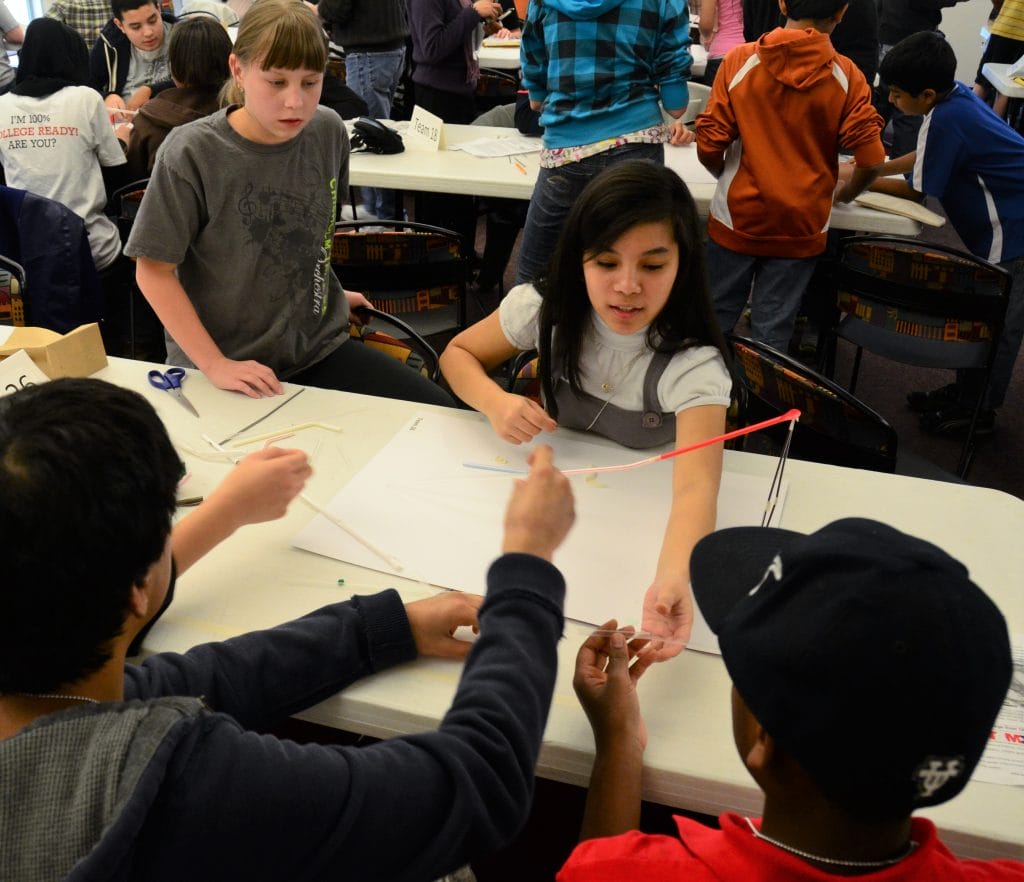
Photo of students mid-discussion during the Engineering Design Challenge at the 2012 Capital Area Divisional Math & Science Competition, hosted at National Instruments.
Team member roles:
Since one goal of TAME’s competitions is to help students envision a future in a STEM career, all team members are assigned roles, just like a real engineering team. Each person is expected to complete their assigned “deliverable” during the competition. Feedback from participants over the years suggests that this helps students speak up in their role even if they do not know their teammates. Students who use professional titles during the Engineering Design Challenge seem to take more pride in their work and be more likely to identify with a future in STEM.
PROJECT MANAGER
Serves as the team leader. They are responsible for verifying that all documentation is complete, all requirements are met, and that the project is completed on time.
LEAD DESIGN ENGINEER
Leads the design phase for your team. They will lead the team in determining what approach and strategy the team will use to earn points.
LEAD CIVIL ENGINEER
Leads the construction phase. They make sure that the structure and its supports are stable and that the BB can travel through the track and document the design for scoring.
LEAD TEST ENGINEER
Acts as the team’s representative during judging and complete “testing phase” section on the Team Information and Documentation Form.
LEAD MATERIALS ENGINEER
Ensures only materials provided are used in the project and see that materials are not lost or misplaced during the building phase.
Photo of students using straws to build a BB Coaster during the Engineering Design Challenge at the 2012 Capital Area Divisional Math & Science Competition, hosted at National Instruments.
Ready to tackle the challenge? Download the materials using the buttons below.
Download the PowerPoint Presentation (PowerPoint file)
Download the Student Team Instructions (PDF)
Download the Judge Instructions (PDF)
Download the Coordinator Instructions (PDF)
Post-challenge reflection:
These activities are a great chance for students to observe the joys and frustrations of collaborative design. Once the competition is over, ask your students to reflect on their experience. Was it easy to work with a team? What was easy and what was hard? What would each student do differently the next time? What would they do the same?
Middle School TEKS Tie-Ins:
Middle School Math
6th Grade Math
- Apply qualitative and quantitative reasoning to solve prediction and comparison of real-world problems involving ratios and rates
- Generate ratios, fractions, and decimals with the measurements of the coaster during the construction and design
- Represent data graphically with dot plots, stem-and-leaf plots, histograms, or box plots to evaluate results of the coaster’s performance
7th Grade Math
- Solve mathematical and real-world problems involving similar shape and scale drawings of the coaster
- Compare data represented in bar graphs, dot plots, and circle graphs and can use to compare different designs of the coaster
8th Grade Math
- Create graph and plots to understand the relationships of data gathered about the coaster
- Use previous knowledge of surface area to make connections to the formulas and determine solutions for problems involving rectangular prisms, triangular prisms, and cylinders associated with structures of the coaster
Middle School Science
6th Grade Science
- Investigate the relationship between force and motion of BBs in the coaster using a variety of means, including calculations and measurements
- Measure and graph changes in motion when testing the BBs in the coaster
7th Grade Science
- Identify advantages and limitations of different designs such as size, scale, properties, and materials
8th Grade Science
- Demonstrate and calculate how unbalanced forces affect the speed or direction of the BBs’ motion
- Practice appropriate use of resources, including disposal, reuse, and recycling of the material used
- Investigate and understand the differences of speed, velocity, and acceleration
- Experience the presence of Newton’s three laws of motion within the motions of the BBs in the coaster
High School TEKS Tie-Ins:
High School Math
Algebra
- Consider the associations and causation between the design of the coaster and the results of the performance
Geometry
- Have students sketch the top, side and front views and use those views to find the surface area of the the coaster
- Have students design and build models with different geometric shapes to navigate with the coaster
- Help identify two-dimensional shapes of different cross sections of the three-dimensional shapes of the coaster
High School Science
Chemistry
- Students can collect data and make measurements with precision and record data using International System (SI) units
- Organize, analyze, evaluate, make inferences, and predict trends from data; and communicate valid conclusions
- Exposure to energy and its forms, including kinetic, potential, chemical, and thermal energies present within the coaster
Physics/Integrated Physics and Chemistry
- Students can collect data and make measurements with precision and record data using International System (SI) units
- Organize, analyze, evaluate, make inferences, and predict trends from data; and communicate valid conclusions
- Describe and calculate the motion of the BBs in the coaster in terms of position, displacement, speed, and acceleration
- Assess the relationship between force, mass, and acceleration, noting the relationship is independent of the nature of the force
- Students can develop and interpret free-body force diagrams of their coaster
Earth & Space Science
- Discuss the optimal locations for coaster in different geographical areas, such as near mountains, cliffs, canyons, ocean bluffs, and other landforms in order to apply Earth Science concepts
Looking for more?
TAME offers more in curated idea boards on Pinterest. If you liked these, you’ll love our Engineering: Activities for All Ages board!
With more than 6,000 pins organized into over 50 different boards, TAME’s Pinterest presence is specially curated to help teachers, parents, and students of all ages get excited about STEM.
